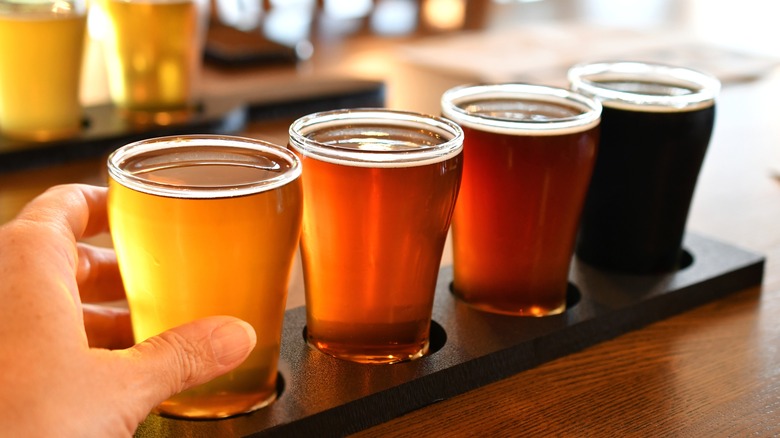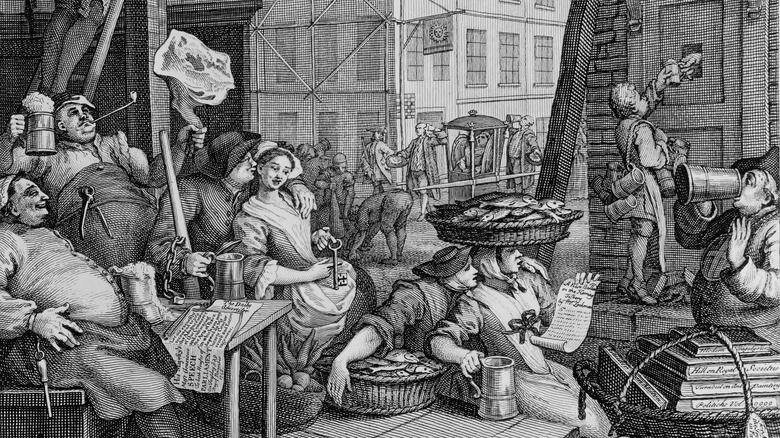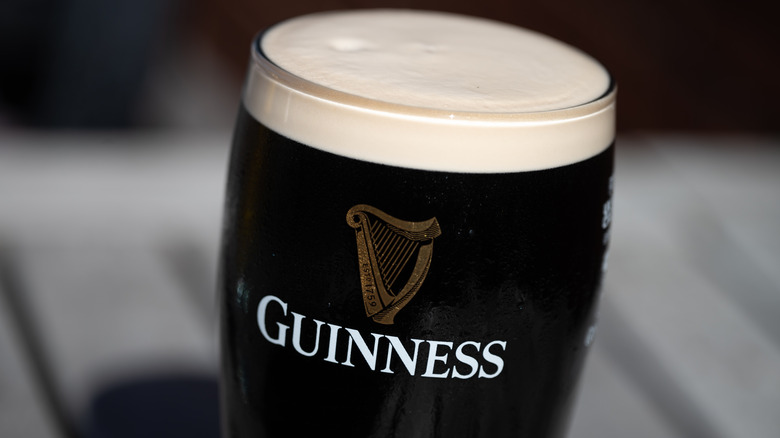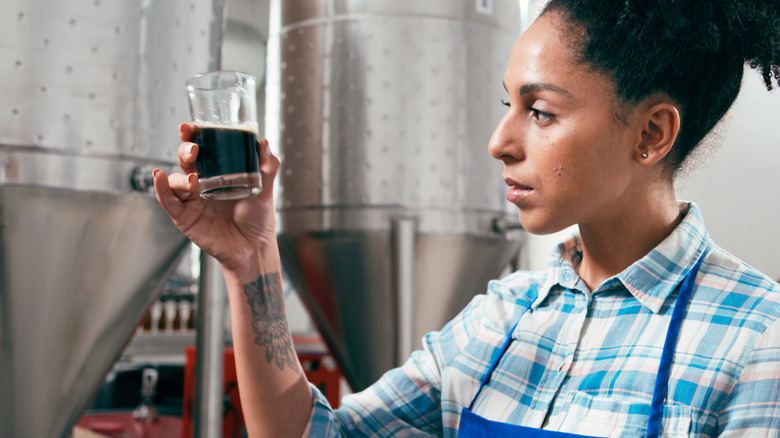Is Porter Beer The Same As A Stout?
As the temperatures cool and the leaves start to yellow, beer drinkers often swap light and refreshing suds for dark and sustaining ones. Porters and stouts are some of the most popular dark beers, but they tend to be lumped into the same class and are sometimes even used interchangeably by consumers. It's widely accepted that the main difference between porters and stouts is the presence of roasted malt in stout-style beers, which brings out smoky, bitter flavors such as coffee and oak.
Historically, a stout could be a porter but a porter could not be a stout. The reason for this is that in the 1700s, porters became a popular beer for the working class and a stout version of a porter was simply stronger in flavor, thickness, and alcohol content. Stout used to refer to "proud" or "strong" according to Anspach and Hobday, a craft brewery in London, so a stout porter was often offered on bar menus as a slightly more expensive but stronger option.
Today, the line between stout and porter is more about the flavor profile, mouthfeel, and the brewer's own discretion. In an interview with Craft Beer and Brewing, Carston Haney, head brewer at Ross Island Brewing in Portland, Oregon, said, "Stouts tend to be heavier in body with more of a focus on coffee and roasted flavors from roasted barley or black malt."
The history behind porter beer
The English porter was the predecessor to the modern stout. Martyn Cornell, who runs the award-winning blog Zythophile, explains how the beer was named after the workers who drank them from the 17th to the 19th centuries in London. A porter was someone who moved goods from one place in the city to another, sort of like a modern day delivery driver. The reputation that came with the name was that porter beer was sustaining, nourishing, and powered the working class. Drinking beer was a major source of carbohydrates and fueled the hard work of loading and unloading ships and transporting goods across the city.
Long gone are the days of porter beer satisfying the thirst of London's working class. The porter style has had a modern resurgence prompted by the American craft brewing scene. The modern porter is a dark brown to black beer brewed with malted barley, meaning the grain is allowed to germinate, which increases the amount of fermentable sugars. It's typically lighter and less intense than a stout, but carries a lot of the same flavor notes such as coffee and chocolate in a milder form.
As you may have figured out by this point, beer is a rabbit hole of a topic and you won't be surprised that there are many different styles of porter being made today. A few interesting examples to keep an eye out for are English Brown Porter (soft, sweeter, mild), Baltic Porter (dark, bitter, higher alcohol), and American Porter (malty, hoppy, chocolatey).
What makes a stout different
Stout started its life as a subcategory of porter. A stout porter was a stronger version that used the exact same ingredients of malted barley and hops, just with less water, noted by Ron Pattinson, a beer historian.
Today, stout is arguably in its own category with many style variations and ways to drink it. One of the striking differences that separates the porters from the stouts is the use of roasted barley. This adds smoke and espresso to the standard chocolate flavor profile of porters. The body of a stout is often characterized as rich, creamy, and thick which is why it's also known as a "meal in a glass."
There are many styles of stouts out there that are worth trying, but it's impossible not to mention Arthur Guinness, the creator of the Irish stout. Originally, Guinness was a porter brewery but transitioned to stouts in the late 19th century and has been innovating in the space ever since. One of the most impactful innovations that made Irish stouts stand on their own, is the addition of flaked barley, which is what's responsible for the intensely creamy mouthfeel. There's debate on the best way to serve Guinness, but refrigerating it for 24 hours and pouring slowly is a good place to start.
Where to draw the line between porters and stouts
When it comes to comparing beer styles and categorizing porters and stouts it's important to note that there aren't many regulating bodies that actually control naming. In the world of wine, calling your bottle a Champagne or port, comes with a mountain of rules and regulations on ingredients, process, and locale. With beer we have the German purity law that was enacted in 1516 and limits what ingredients can be used in German beer, but not much else.
History, flavor, and the use of roasted barley generally inform whether a brewer labels their beer a porter or a stout. That's all to say that the modern porter and stout landscape is an exciting frontier where heritage and innovation are intertwined to create new and interesting styles inspired by the beer's rich history.



